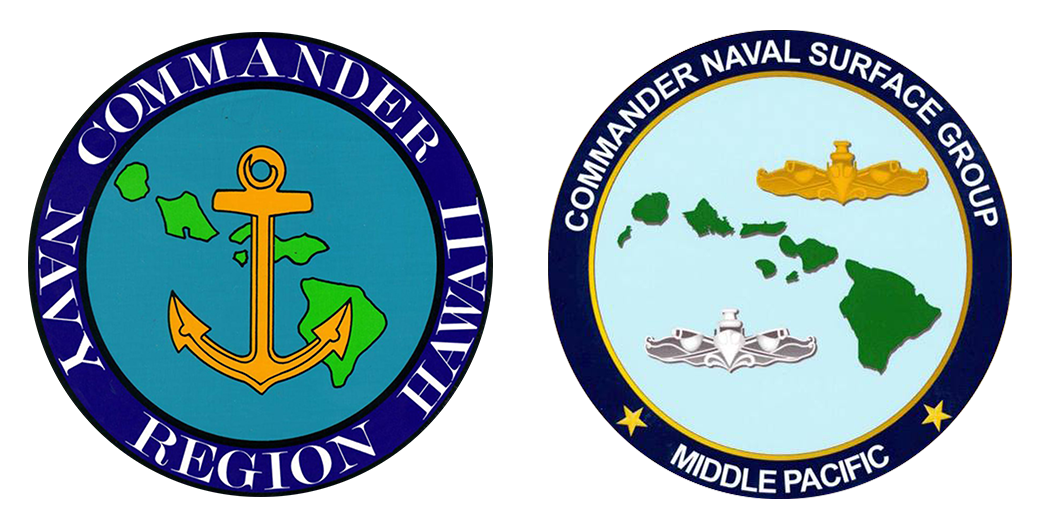
JOINT BASE PEARL HARBOR-HICKAM, Hawaii – As of May 10,
the Navy has received validated results for the second month of sampling
for 11 of 19 zones in the Navy water distribution system for Joint Base
Pearl Harbor-Hickam (JBPHH), with test results indicating that the water
in the system remains safe to drink.
The Navy will continue to work with the Hawaii Department of Health (DOH),
residents, and other users of the Navy water system to address any
isolated exceedances of state and federal drinking water requirements,
including the incident-specific parameters (ISPs) set by the DOH for the
Navy water system.
On April 21, the Navy notified the Hawaii Department of Health (DOH) that
it had detected elevated levels of lead from a residential building
located in Aliamanu Military Reservation (Zone H1). On April 25, the Navy
notified the DOH that it had detected elevated levels of lead from another
residential building located in the same zone.
These were the only two exceedances out of 350 samples in the following 11
zones, including 220 residences: I1 (Red Hill Housing); A1 (Pearl City
Peninsula); A2 (Ford Island); D1 (Hale Moku, Hokulani); B1 (McGrew,
Halawa); E1 (Makalapa); G1 (Camp Smith); H1, H2, H3 (Aliamanu Military
Reservation); and F1 (NEX, Moanalua Terrace).
The initial samples, taken April 14 and 15, respectively, as part of a
long-term monitoring of the Navy water system, were taken from indoor
sinks at Army residences in Zone H1. The samples tested positive for lead
at a level of 22.3 parts per billion (ppb) and 22.4 ppb, respectively.
Under the federal Safe Drinking Water Act, the Lead and Copper Rule action
level for lead is 15 ppb.
The Navy contacted U.S. Army Garrison Hawaii April 21 and 25, the same
days it received sampling results for the respective residences, and the
Army advised the families not to consume the water, but that all other
uses were acceptable. The Army immediately began providing bottled water
for consumption.
The Navy determined, in coordination with the DOH, that the next steps
were to secure those sinks from use and to sample additional fixtures in
each house in order to determine their respective sources of the elevated
lead levels.
For the first residence, the Army replaced the faucet April 22, and the
Navy conducted additional sampling the same day. The resampling results
showed no exceedances.
For the second residence, the Army determined that it would await
resampling results before determining a course of action. The Navy sampled
multiple fixtures in the house on April 28. The resampling results showed
no exceedances.
Since LTM sampling began in March 2022, there have been
seven detections
of elevated lead levels and one detection of an elevated mercury level in
zones D1 (Hale Moku, Hokulani), D2 (Hickam, Hale Na Koa, Officer Field
Area, Onizuka Village), E1 (Makalapa), F1 (NEX, Moanalua Terrace), F2
(Catlin Park, Maloelap, Doris Miller, Halsey Terrace, Radford Terrace),
and H1 (Aliamanu Military Reservation), out of 1,666 total samples to
date. In each case, the Navy immediately contacted the residents or
building point of contact as well as the DOH as soon as it received
validated sampling results.
Under an interagency-approved flushing and sampling plan, the Navy water
system is now in a two-year period of long-term monitoring. This includes
testing about 6,000 more samples from roughly 55% of residences and other
facilities on the system for more than 60 different contaminants.
Under the plan, the Navy is sampling 5% of homes and other buildings in
each zone of the Navy water system for the first three months after the
DOH amended that zone’s health advisory (a total of 15% in each zone after
three months). After that, 40% of all homes and other buildings on the
system will be sampled over the following 21 months. All schools, child
development, and medical centers will be sampled regularly during both
phases of the plan.
Sampling locations for homes in each zone are chosen as a geographic
representation of the zone, based on their location on the neighborhood
distribution system. Different homes will be chosen during each phase to
provide a good geographic spatial representation of homes sampled.
All validated sampling results are made available once reviewed by the
DOH. Summary reports and laboratory data will be posted by zone at:
https://jbphh-safewaters.org.
The DOH has a fact sheet for corrective actions people can take to reduce
their exposure to lead in their drinking water at:
https://health.hawaii.gov/heer/files/2021/06/WIIN-Corrective-Action-Factsheet.pdf.
For more information on long-term monitoring of the Navy water system, see
https://jbphh-safewaters.org.